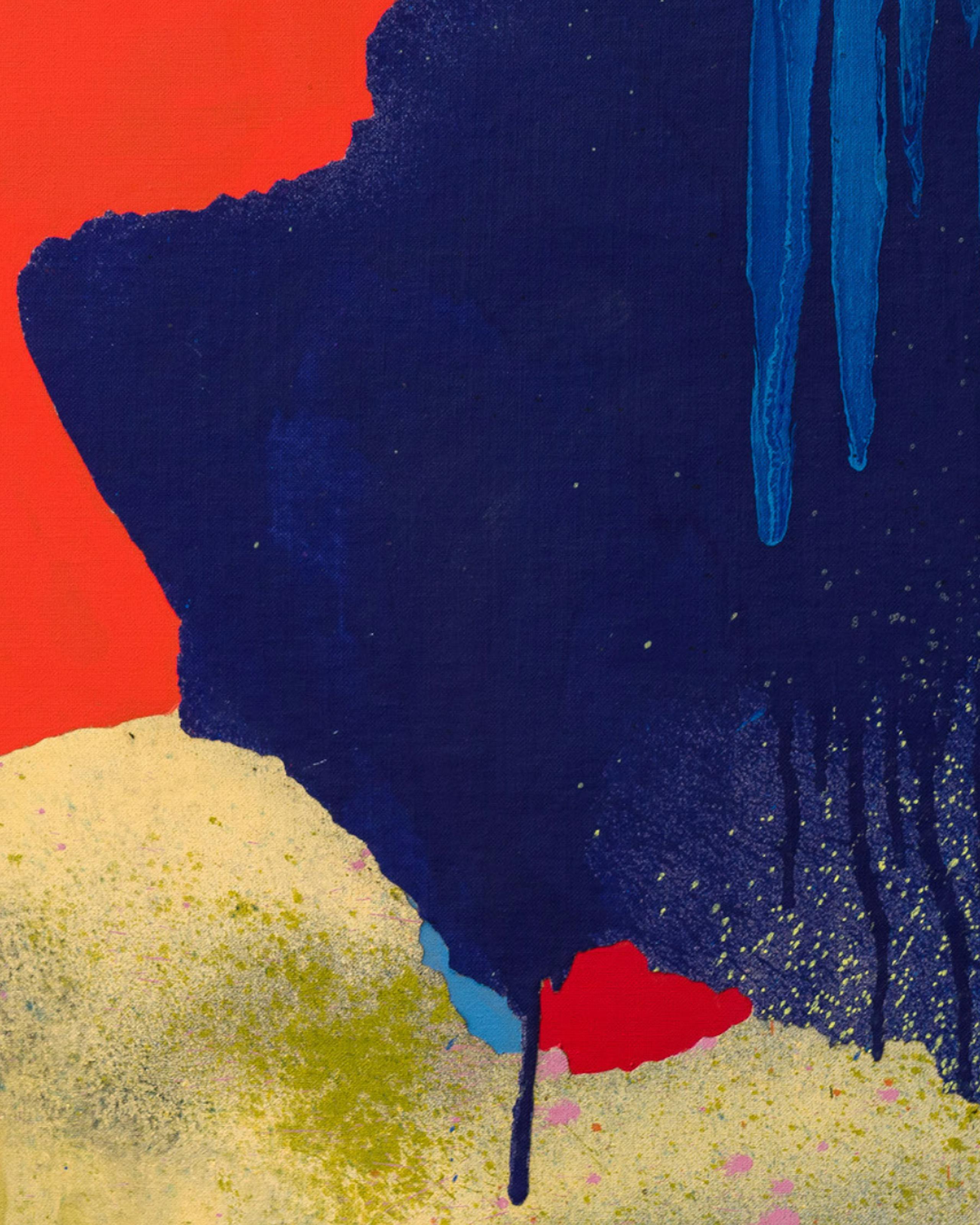

Stefano Arienti, self-portrait, courtesy of the artist
Until 11 February 2024, Triennale Milano is hosting ‘Italian Painting Today’, an extensive group exhibition curated by Damiano Gullì that presents an overview of the world of Italian painting through the works of 120 artists who use the medium of painting in its most diverse forms and formats. Through a generous selection of artists born between 1960 and 2000, the exhibition offers the possibility of identifying themes and traits common to the ‘Italian’ style across the various artistic paths, while also linking the various national forms of expression to influences and paradigms from other cultures. What emerges, as in the past history of painting in Italy, is a space characterized less by the preservation of national features than by experimentation and the absorption of different ‘frequencies’.
Certainly, there are some enduring approaches that belong to the purest tradition of Italian painting, which finds in the intellectual and synthetic dimension a kind of ‘conceptual’ position, a position that in the history of Italian art has anticipated the trend to which the term itself refers. And it is precisely by placing themselves in a dialectical position with respect to the norms governing conceptual art that artists born after the 1960s have revisited the medium of painting with new and unexpected formal outcomes.
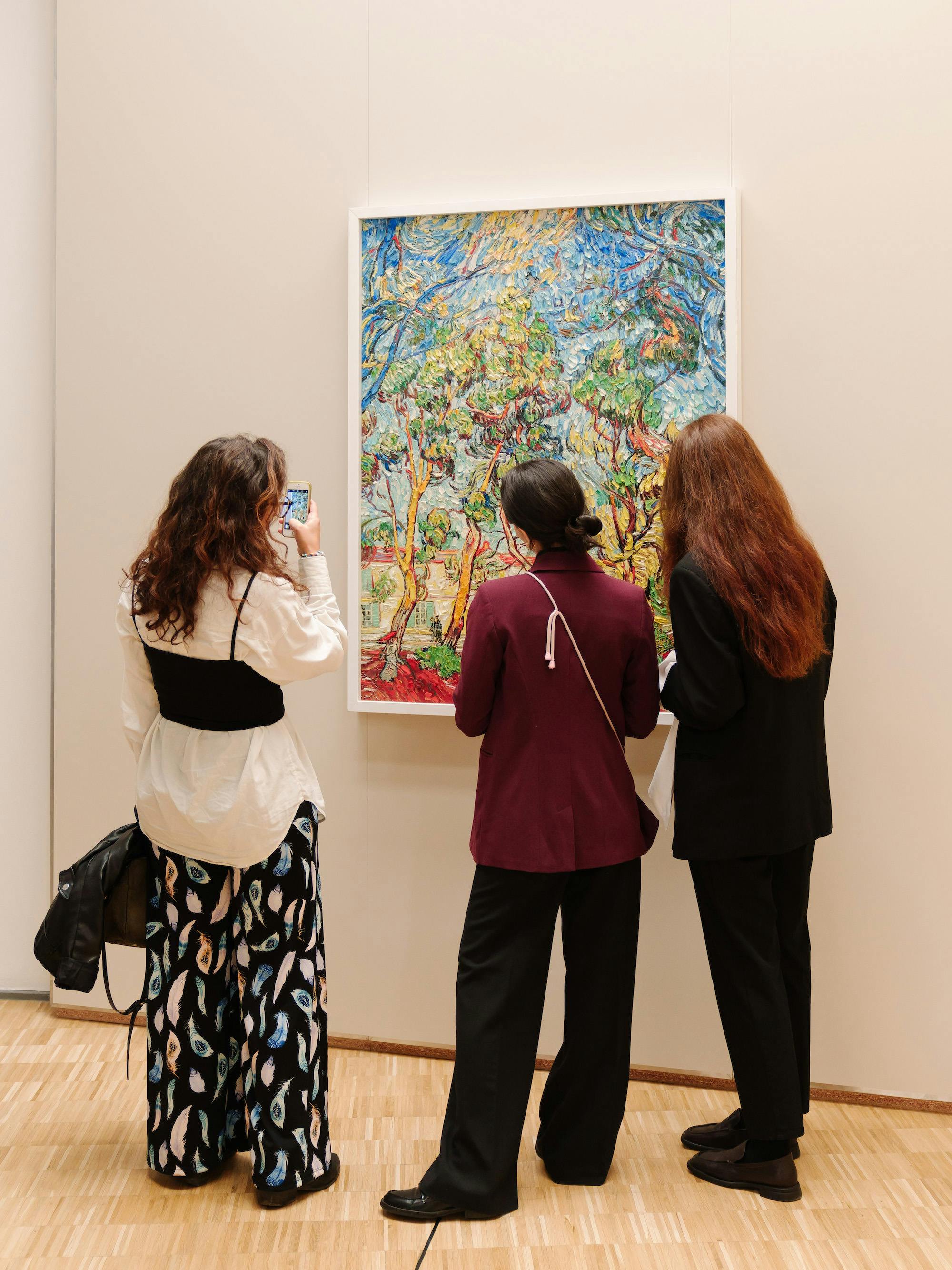
Italian Painting Today, installation view
Among the artists featured in the exhibition, Stefano Arienti (Asola, 1961) is one of the key figures for understanding the development of the visual culture that has characterized the languages and formal approaches of the contemporary Italian art scene since the late 1980s. Few artists have explored the role of images as radically as Arienti, by approaching them and painting with analytical sensitivity. I have asked Arienti a few questions to explore the theme of the work he is exhibiting at the Triennale and, more generally, his artistic practice.
Stefano Arienti (Asola, 1961) is one of the key figures for understanding the development of the visual culture that has characterized the languages and formal approaches of the contemporary Italian art scene since the late 1980s.
Let's start with the work exhibited in the Triennale exhibition ‘Italian Painting Today’. Tell us about its genesis: what reflections on the gesture of painting inspired it?
Ospedale a Saint-Rémy (after Vincent Van Gogh) is a recent work of a type first conceived in 1989, my ‘play doughs’. I was a young artist at the time and shared a studio with Amedeo Martegani, who touched up reproductions of old paintings with oil brushstrokes. The work at the Triennale is not painted with paint and brushes, but consists of a photographic reproduction of a work by Vincent Van Gogh (different in color and size). On this photograph, which I need to print a contemporary object, a poster, suitably mounted on a rigid support, I applied a lot of wax with my fingers to shape the image. The color of the play dough on the poster echoes that of the original brushstrokes, and the material is often kneaded directly as it is applied. The tactile effect of the wax/play dough brings out the third dimension of the brushstrokes, which is magnified by the photographic reproduction. At first glance it is very difficult to distinguish my work from the painting reproduced in the photograph. The final effect is a highly tactile painting with an emphasis on color, a paradoxical restoration halfway between parody and homage.
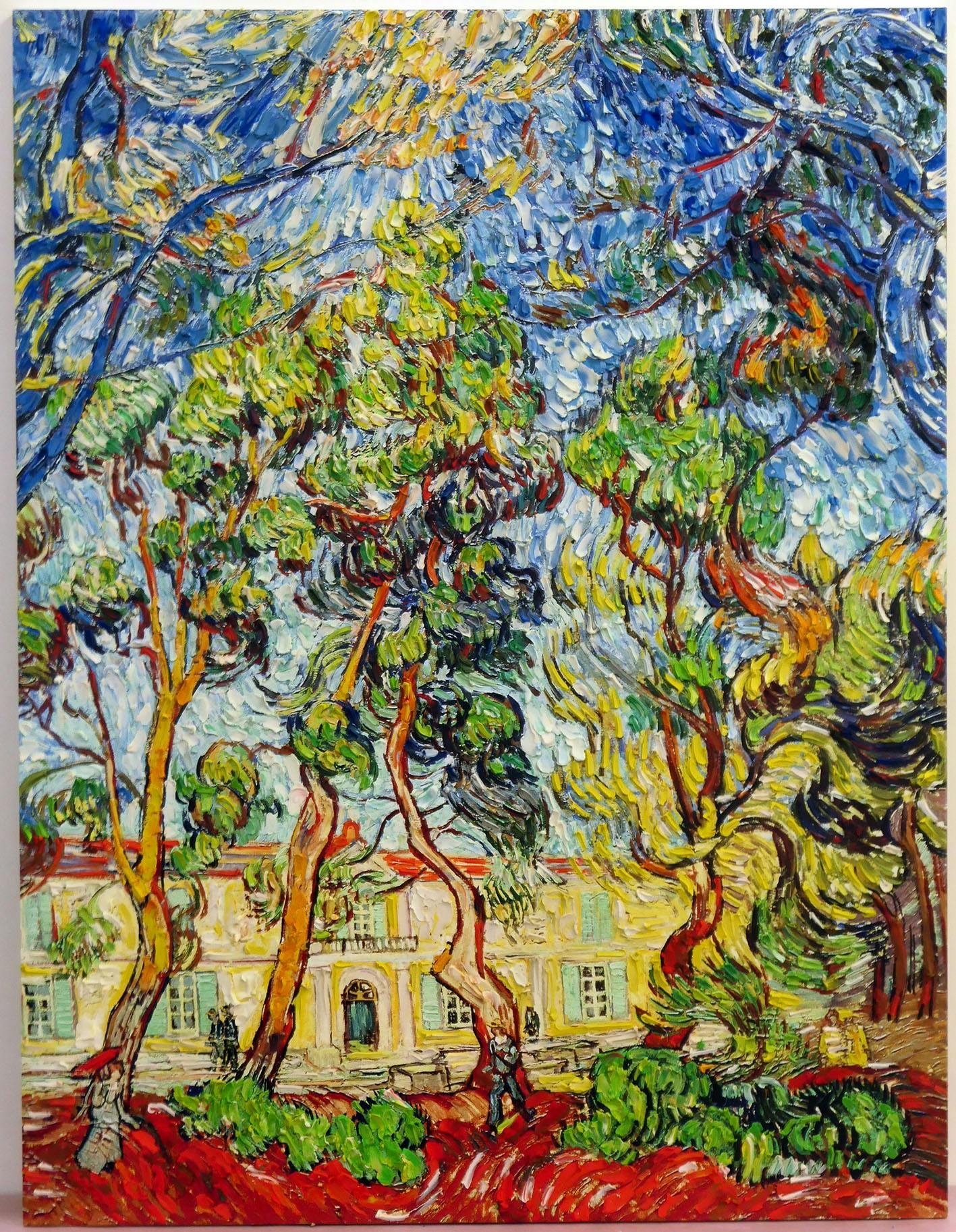
Stefano Arienti, Ospedale a saint-rémy (da Van Gogh), 2022
The final effect is a highly tactile painting with an emphasis on color, a paradoxical restoration halfway between parody and homage.
Looking at the selection of works on display, the infinite range of expressions and solutions adopted by the various artists involved in the exhibition, it seems that painting is almost a pretext to indicate a medium that is more often evoked in conceptual than in material terms. In this respect, I think your research is essential to grasp the transformation of this practice in Italy since the early 1990s: do you still feel ‘ideally’ linked to the idea of painting?
The ‘conceptual’ dimension of painting and works of art in general is part of our contemporary context and its roots go back centuries. I don’t think I have really contributed much to a historical process driven by many leading figures. If anything, I have always adopted a nonchalant and explicit attitude, by proposing works that can be read from different angles. I am very attached to images and consider myself a visual artist. I am also very fond of painting in its various different traditions.
In your opinion, is the generational element important in exploring the macro-continent of painting in Italy? The artists of your generation represented in the exhibition have newly approached the theme of image and figuration, with different sensibilities (I am thinking, for example, of artists like Alessandro Pessoli and Margherita Manzelli). They did so at a historical moment in which this choice could not be taken for granted, by adopting an independent point of view, equidistant both from the already mannerist form of Arte Povera and from the pure expressiveness of the Transavantgarde. Do you feel that your art also stems from a need for individuality that is somehow linked to a common sensibility?
It was a real resource in Italy to have such intense examples of image quality as Arte Povera and the Transavantgarde, but equally valuable was the kind of painting that could be found in Italy, as represented by many strong and original personalities that are difficult to classify, such as Salvo and Luigi Ontani, Carol Rama and Carla Accardi. I am not the only one to have engaged with images from the present and the past, and I find it reassuring to know that artists from my generation are working alongside me.
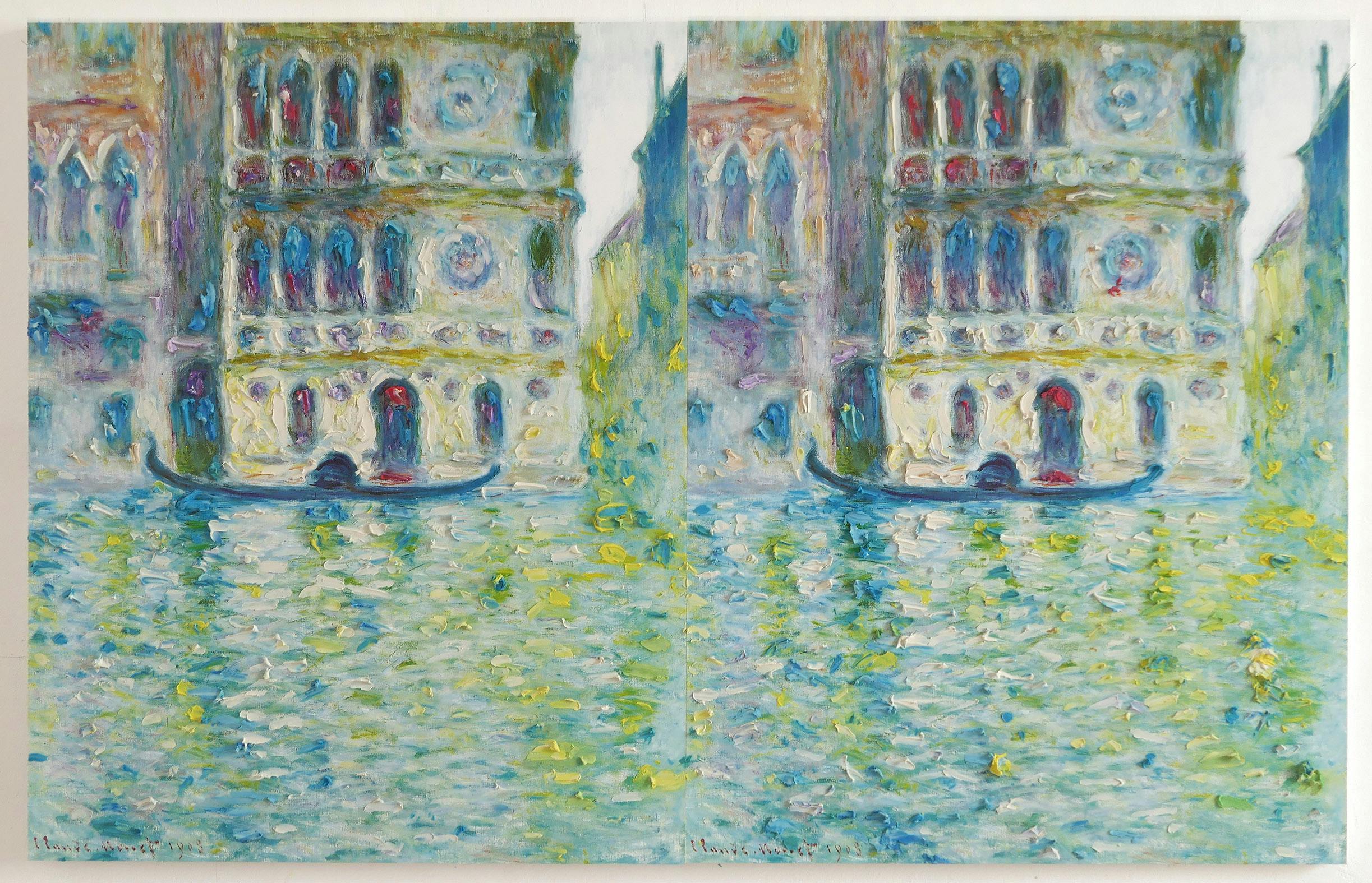
Stefano Arienti, Palazzo Dario (da Claude Monet)
Browsing through your vast oeuvre, it is striking how different your works can be, made with very different techniques: on paper, with acrylic paint, collages, ready-mades, tactile works, installations, environments... Yet, images always play a central role, even when they are expanded in space and transfigured. Could we say that you have a certain faith in images?
I am always fond of images, but I never separate them from the objects that carry them. I might say that I love the visual and material side of things. Even when images seem immaterial to us, they are actually always contained in some physical device, be it electronic or biological.
Again on the subject of images, I was struck by a text of yours published in the 1993 Toujours Mensognes catalog:
“There are protected areas where images have no clear copyright. Images are crammed in. They have the right not to be the ones in the daily shows. They don’t have to give you any specific information. They are just an example. Someone chooses them and offers them to you simply as an example. There is the natural wildness of something that is now being lost. Haven’t you noticed that you have lost something? Has your eye already lost its wildness? Haven’t you noticed how much you can keep yourself company? Images are alive. What amazing company they make, once you become aware of their physical presence! What generous eroticism! Provided you are willing to dive into their matter. Images are like animals: they make themselves understood without saying a word.”
I was wondering whether this natural, empathetic relationship you have with the images you describe as being “in the wild” has changed in a context significantly altered by the digital iconosphere?
We increasingly live in a dictatorship of images: what we see and how we see it is cleverly constructed to direct our consent, both as citizens and as consumers. But this is not only the fate of the visual; we are not well off in the information sphere either.
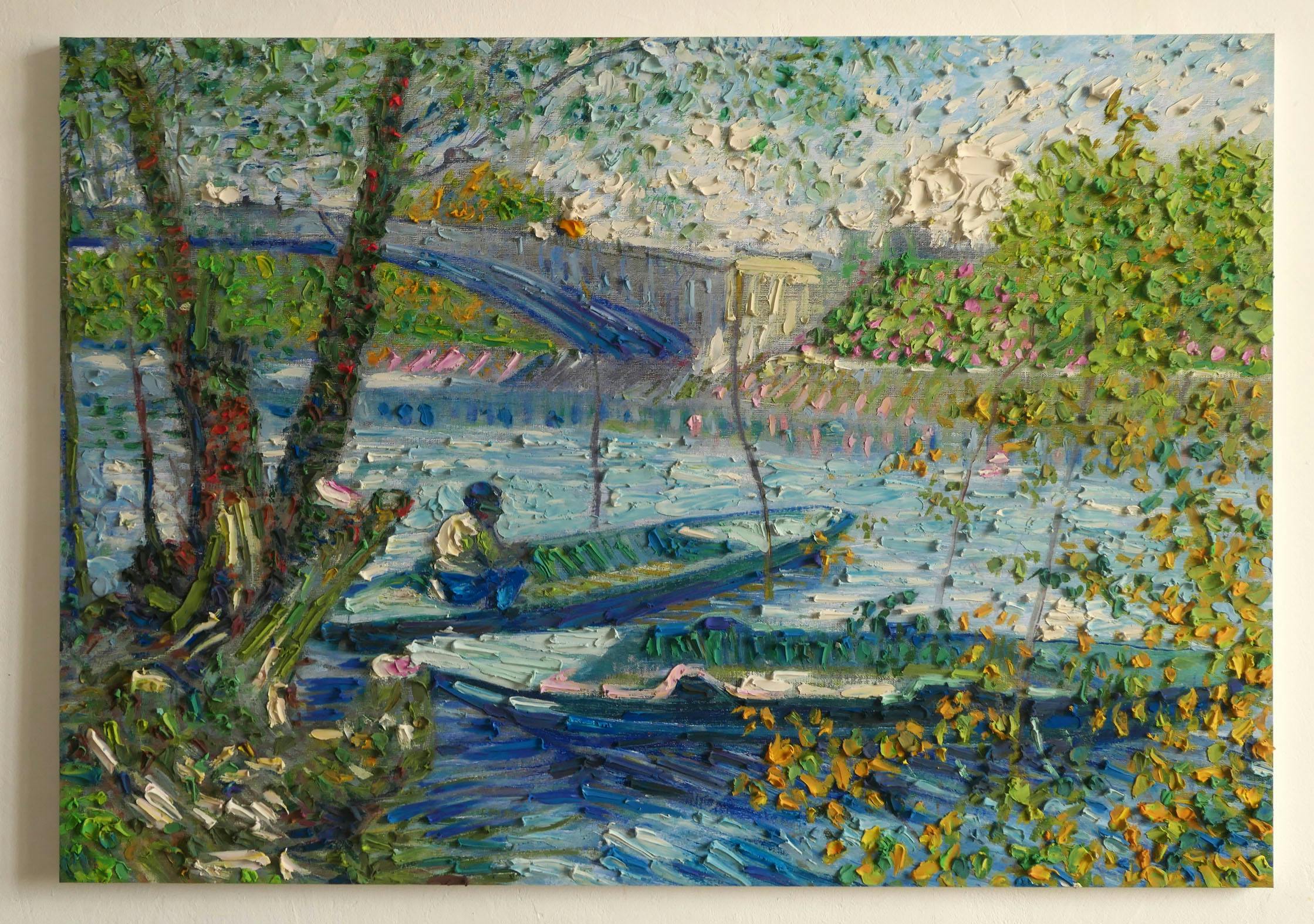
Stefano Arienti, Pesca in Primavera (da Van Gogh)
Looking at the exhibition, I noticed that the human figure, the body, when it is present, is (almost) always an imaginary, deformed, reformed, surrealist, symbolist body or an avatar. In your art, what is your relationship to and view of the body, even in its essence?
The presence of a physical body is palpable in some specific cycles of works, particularly the nudes and portraits. But more than pictorial works, these are drawings or images related to photography.
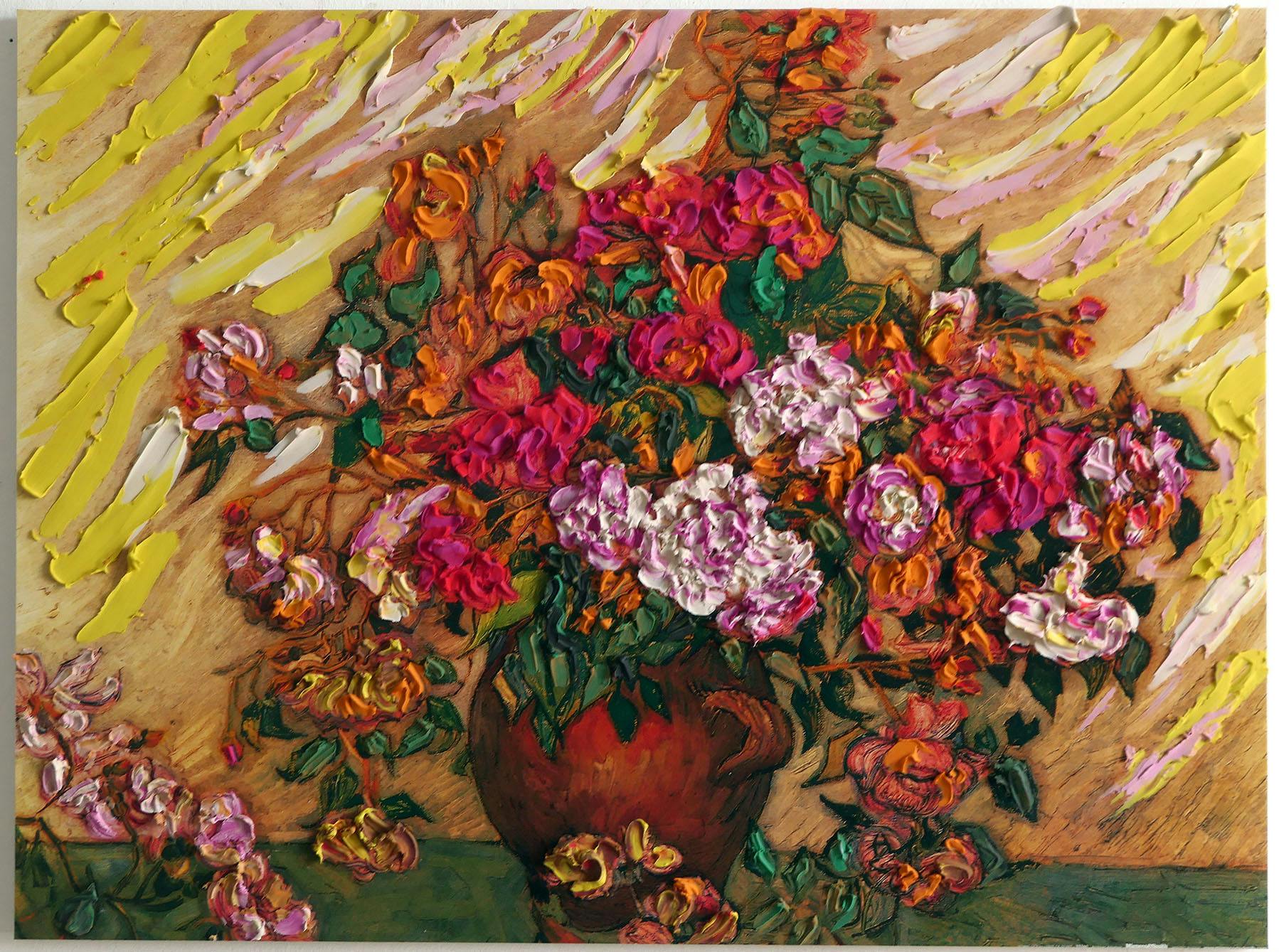
Stefano Arienti, Vaso di rose (da Van Gogh), 2021
Earlier we spoke of how your generation has renegotiated its relationship with painting, coming from a tradition (Arte Povera) that has long weighed on other forms of artistic narrative, especially in Italy. Looking at this selection today, it is clear that the dimension of ‘painting’, pictorial or not, has made a powerful comeback at the international level. In your opinion, is this evidence of the immortality of the medium or the fact that paintings sell more easily?
Paintings sell and have always constituted an irreplaceable share of the art market. But artists have never stopped loving paintings, whether they look at them or take pleasure in painting themselves. If anything, photography, drawing and digital techniques are increasingly in tune with painting – they are not simply alternatives to it.
Are there any artists among those selected for the exhibition who, regardless of their age, are presenting something ‘new’ or simply more interesting through their practice?
To be new and interesting is an unavoidable quality of contemporary artistic production; the opposite is almost impossible. It is only the counterfeiters who try to do the opposite, and even they often fail.
Related events
